Elbow Stiffnessaccording to TCM
Symptom family: Elbow issues
Did you mean? Elbow Numbness
What is Elbow Stiffness?
Elbow stiffness refers to a reduction in the elbow joint's range of motion, often accompanied by discomfort. It limits the ability to fully extend or bend the arm, affecting daily tasks.
This condition can arise from various causes, including overuse, injury, underlying joint conditions, or prolonged inactivity. Elbow stiffness can manifest as a mere inconvenience or a symptom of a more serious musculoskeletal issue.
TCM Perspective on Elbow Stiffness
In Traditional Chinese Medicine (TCM), elbow stiffness is often seen as a manifestation of disharmony within the body's energy system. TCM theory suggests that such symptoms arise when the flow of Qi (vital energy) and Blood in the body's Channels is obstructed.
This disruption can be due to external factors like physical injury or internal imbalances, such as Qi Stagnation or Dampness. Unlike Western medicine, which primarily focuses on the physical joint, TCM considers both the physical and energetic aspects of the symptom.
TCM Causes of Elbow Stiffness
From a TCM standpoint, elbow stiffness can stem from several patterns of imbalance. One common cause is the Painful Obstruction syndrome, where the flow of Qi and blood is hindered, leading to joint stiffness and discomfort. This condition is often linked to the presence of pathogenic factors such as Wind, Cold, or Dampness invading the Channels. Accurate diagnosis of the underlying TCM pattern is crucial for effective treatment.
Root Causes of Elbow Stiffness in TCM
Explore below more details about what might cause Elbow stiffness according to TCM.
TCM Herbal Formulas for Elbow Stiffness
TCM offers various formulas and herbs tailored to the specific patterns causing elbow stiffness. In the case of Painful Obstruction syndrome, formulations like Wu Tou Tang, which warms the meridians and dispels Cold, can be effective. This formula often includes ingredients like Prepared Sichuan aconite, known for its properties to eliminate Wind and Dampness, and alleviate pain. The choice of herbs and formulas depends on the individual's overall condition and the specific TCM diagnosis.
Acupoints for Elbow Stiffness
Acupuncture is another key component of TCM treatment for elbow stiffness. Specific acupoints are selected to address the underlying patterns. Points such as Quchi LI-11, Shousanli LI-10, and Chize LU-5 are often chosen for their effectiveness in clearing Heat, resolving Dampness, and removing obstructions from the channels.
These points help in restoring the smooth flow of Qi and blood, thereby alleviating stiffness and improving joint mobility. The precise selection of acupoints is based on individual diagnosis, ensuring a targeted approach to treatment.
Explore below some TCM herbal formulas used to address elbow stiffness, organized by cause and by formula type.
- By Formula Type
- Formulas that warm the meridians and disperse cold
- Formulas that dispel wind-Damp
- Formulas that dredge and disperse external wind
Formulas that warm the Meridians and disperse Cold
These formulas are suitable for some elbow stiffness-causing patterns like Painful Obstruction.
One such formula is Wu Tou Tang, with prepared sichuan aconite as a key herb.
Formulas that dispel Wind-Damp
These formulas are suitable for some elbow stiffness-causing patterns like Painful Obstruction.
One such formula is Da Fang Feng Tang, with saposhnikovia root as a key herb.
Formulas that dredge and disperse External Wind
These formulas are suitable for some elbow stiffness-causing patterns like Painful Obstruction.
One such formula is Xiao Huo Luo Dan, with prepared kusnezoffii aconite as a key herb.
Acupoints for Elbow Stiffness
Explore below some acupoints used to address elbow stiffness, organized by meridian.
- By Meridian
- Large Intestine Channel
- Lung Channel
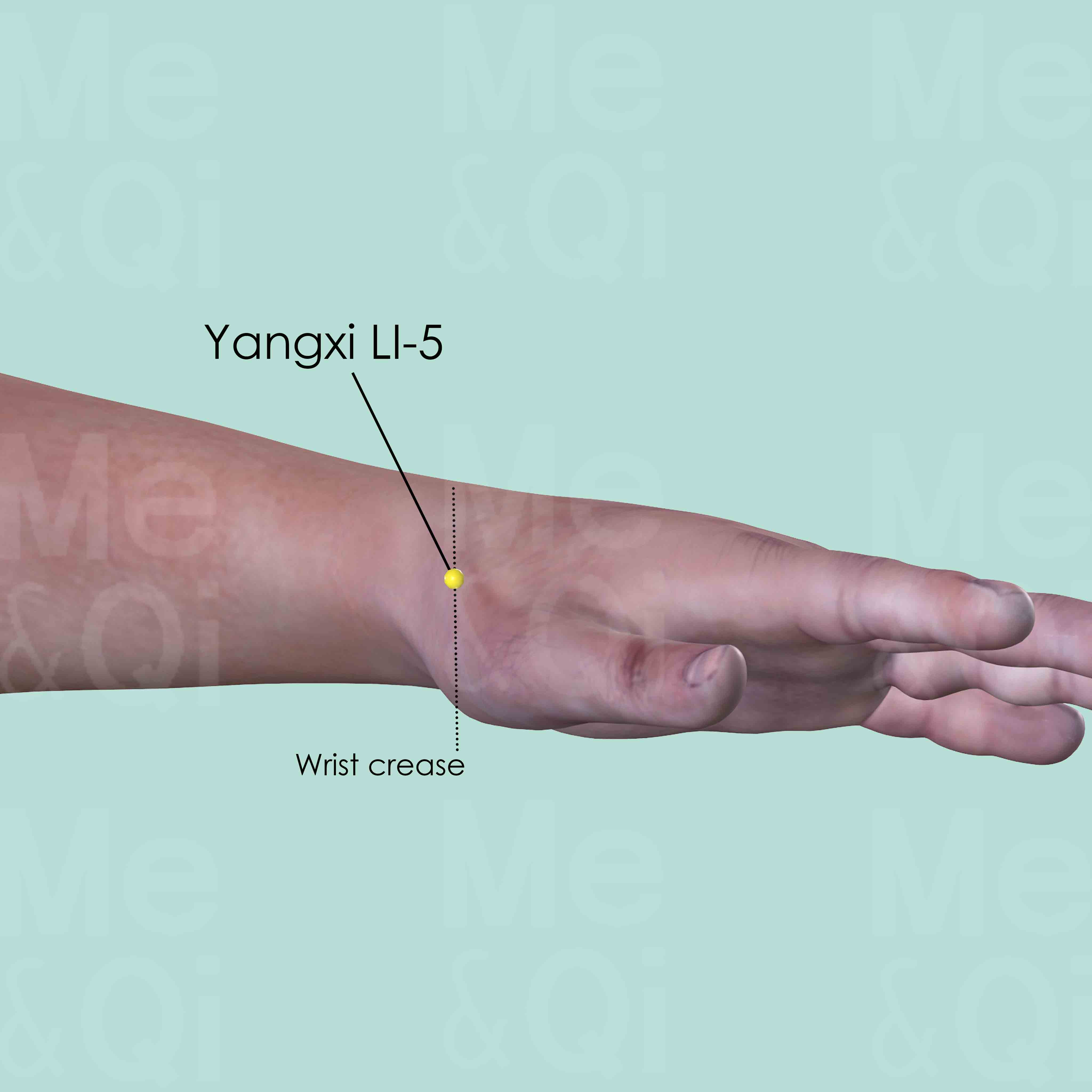
Yangxi LI-5
On the radial side of the wrist. When the thumb is tilted upward, it is in the depression on the wrist joint space (wrist crease) between the tendons of extensor pollicis longus and brevis muscles.
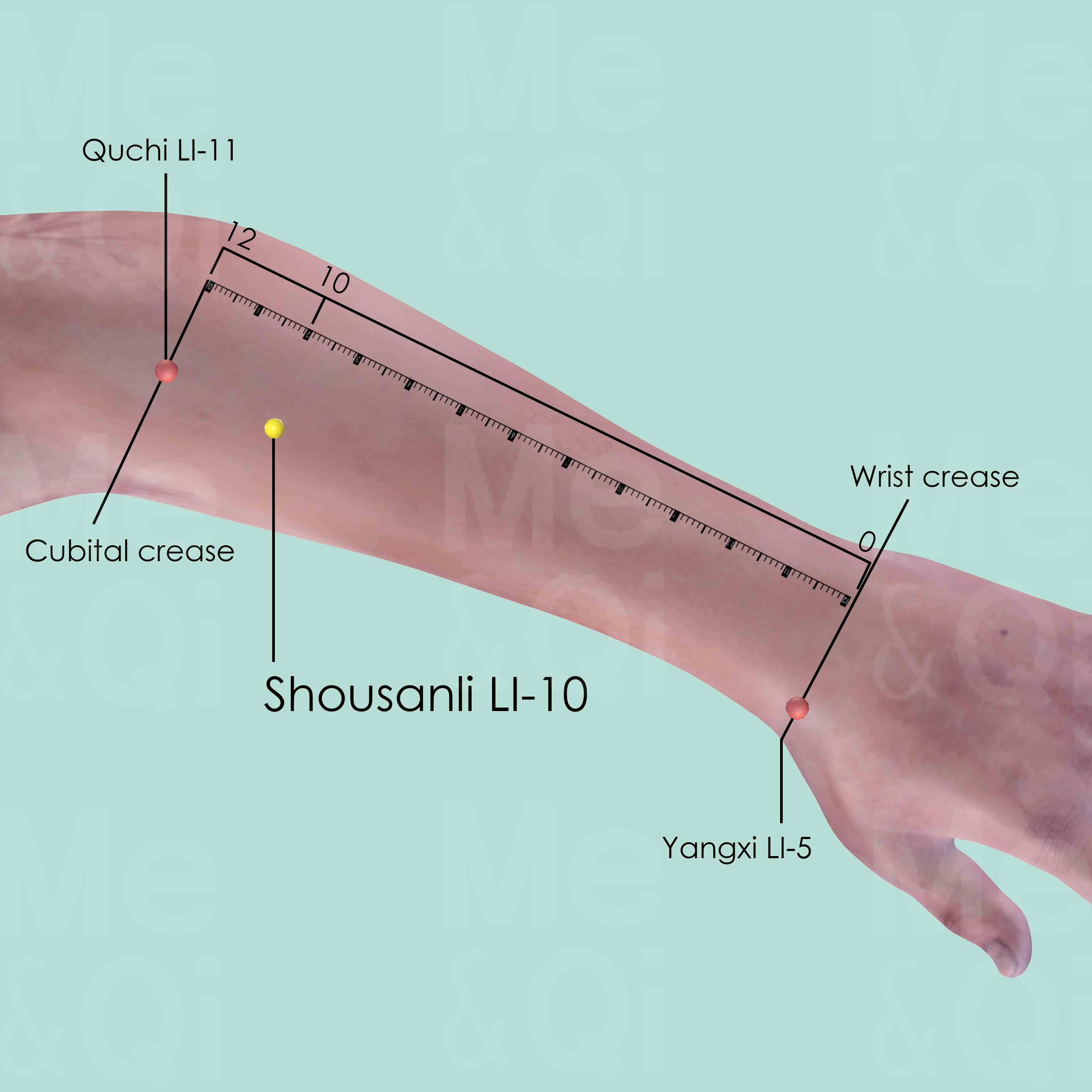
Shousanli LI-10
When a fist is made, with the ulnar side downward and elbow flexed, the point is 2 cun distal to Quchi LI-11 of the line joining Yangxi LI-5 and Quchi LI-11.
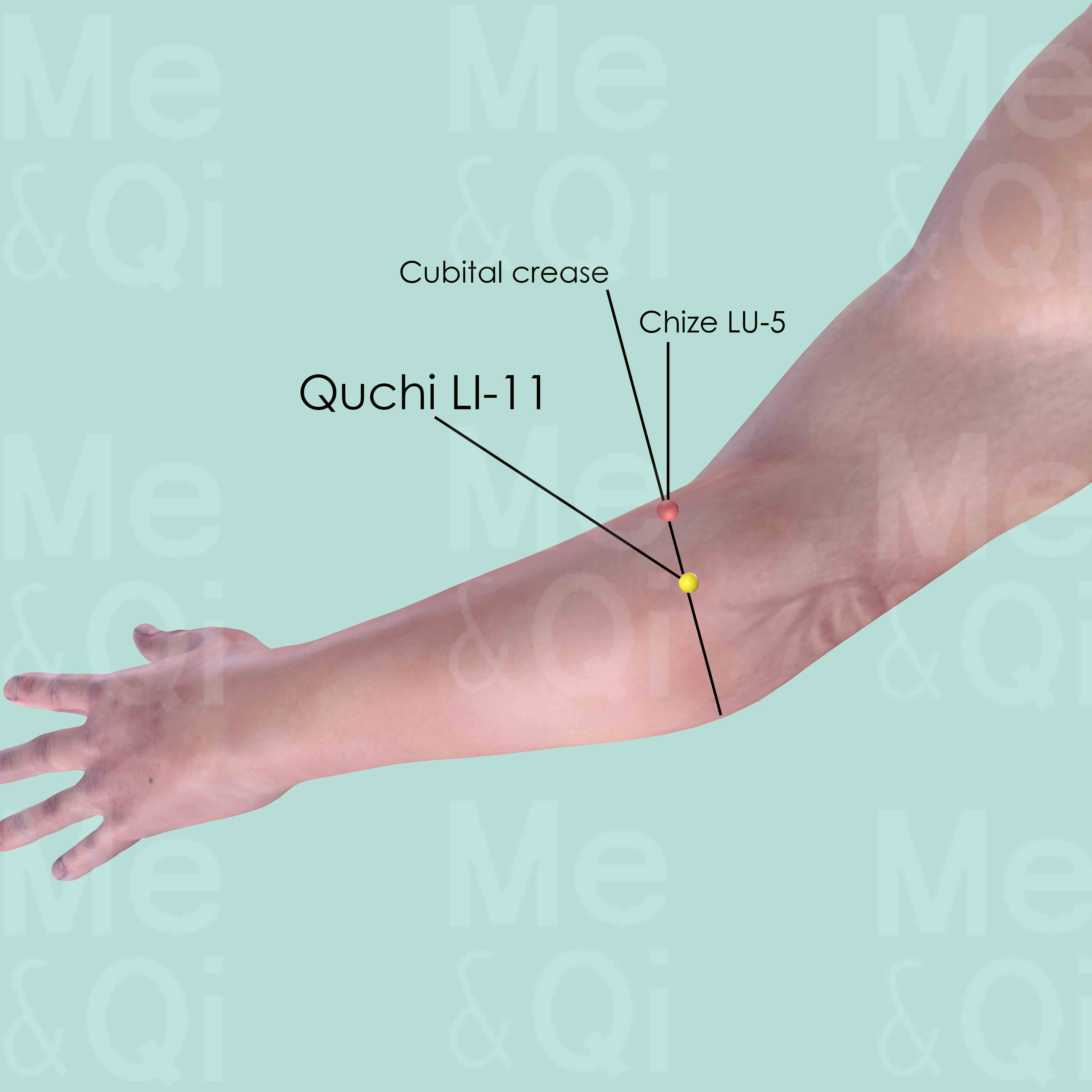
Quchi LI-11
When the elbow is flexed, Quchi LI-11 is in the depression at the lateral end of the cubital crease, midway between Chize LU-5 and the lateral epicondyle of the humerus.
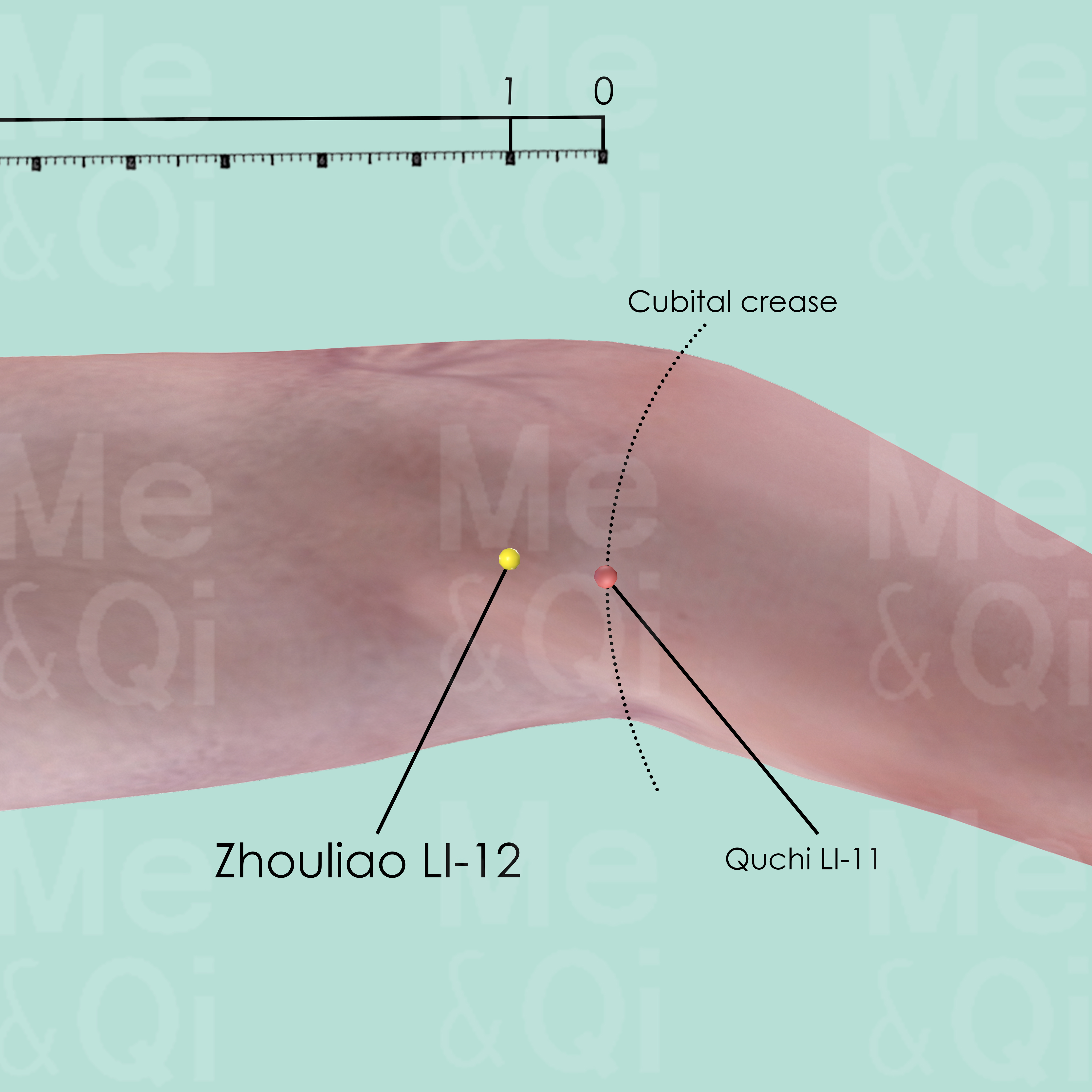
Zhouliao LI-12
When the elbow is flexed, Zhouliao LI-12 is on the anterior border of the humerus, 1 cun proximal to Quchi LI-11 on the lateral end of the cubital crease.
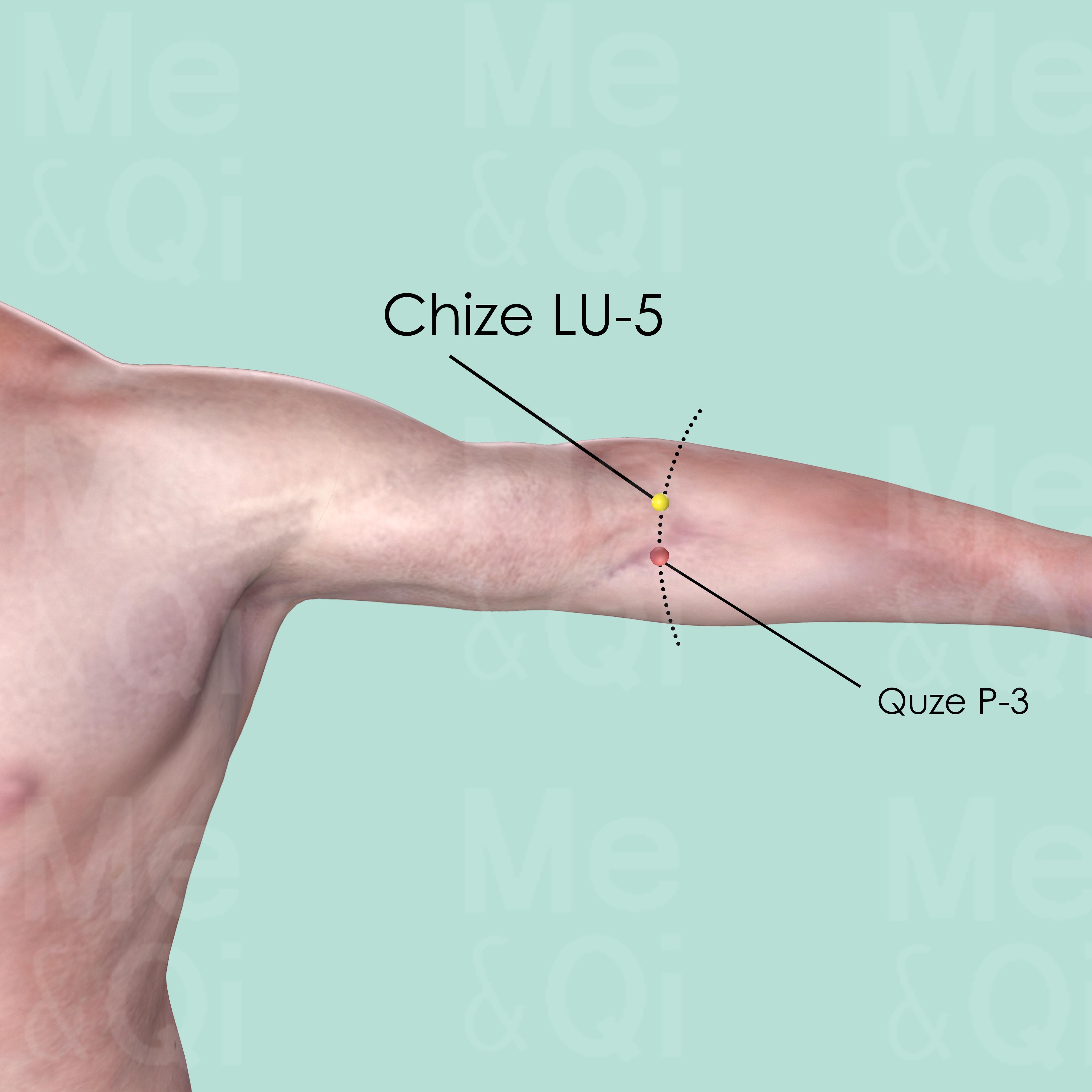
Chize LU-5
On the cubital crease, on the redial aspect of the biceps tendon. It can be easily identified when the elbow is slightly flexed.
